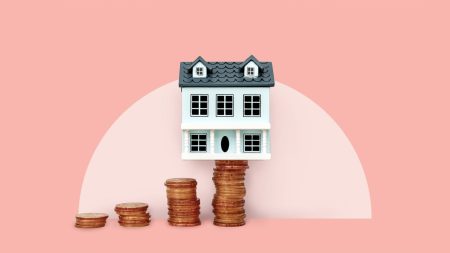If there’s one thing Americans can agree on, it’s confusion about tipping.
While tipping is expected sometimes, it’s unclear in other situations. Do you tip the DoorDasher who picked up your food order and dropped it at your door? Do you tip the plumber on top of the bill they hand you? If so, how much? Is 20 percent generous or the new normal?
We set out to learn how Americans feel about tipping in 2025, especially given the changing economy. As it turns out, 63 percent of Americans hold at least one negative view about tipping, which is up from 59 percent last year.
However, the percentage of Americans who always tip has stabilized compared to recent years of decline. It seems we’re not throwing in the towel on tipping just yet.
Tipping is part of the American way of life — it’s not going away anytime soon, as much as we may grumble about it.
— Ted Rossman, Bankrate Senior Industry Analyst
Bankrate’s key insights on tipping in 2025
Bankrate Data Center
Since 1976, Bankrate has been the go-to source for personal finance data, publishing average rates on the most popular financial products and tracking the experience of consumers nationwide.
See more
Almost 2 in 3 Americans have at least one negative view about tipping
Among the 63 percent of Americans who have at least one negative view toward tipping, the most common negative viewpoints are:
- Businesses should pay their employees better rather than relying so much on tips (41 percent, up from 37 percent last year)
- Tipping culture has gotten out of control (41 percent, up from 35 percent last year)
- Annoyance with pre-entered tip screens (38 percent, up from 34 percent last year)
Additionally, 27 percent say they tip less or not at all when presented with a pre-entered tip screen (up from 25 percent last year), compared with 11 percent who say they tip more in these scenarios (down from 14 percent last year).
Without tips, wages might feel stretched thin
Americans’ wages are increasing, but some workers still feel they can’t keep up with inflation. The hope that customers will foot the difference could lead to disappointment.
“The high cost of living is a headwind, and many people resent all of the tip creep that has occurred in recent years, with us being asked for tips in previously unconventional settings,” Rossman explains.
Sixteen percent would be willing to pay higher prices if we could do away with tipping, up from 14 percent last year. Fourteen percent are confused about who and how much to tip, up from 11 percent last year.
And 10 percent say they always tip the same amount regardless of the quality of service, the same as last year.
Restaurant-goers are lowering their bills
Around 2 in 5 Americans (39 percent) expect to spend less on dining out this year, according to Bankrate’s 2025 Discretionary Spending Survey. Servers who rely on tips may feel that shift.
Thirty-five percent typically tip at least 20 percent at sit-down restaurants, down slightly from 37 percent last year.
While 58 percent say the amount they tip is most influenced by the quality of the service, that’s down from 64 percent last year, meaning service providers, including restaurant servers, could have a harder time earning a generous tip with excellent service.
Further, 26 percent say they feel good when they leave a generous tip, down from 29 percent last year.
Consistent tipping is leveling out after recent years of decline
Since launching this survey in 2021, we’ve reported a mostly steady decline in the percentage of Americans who say they “always” tip for certain services each year. This year, the number of consistent tippers is balancing out.
While more Americans are complaining about tipping, the frequency of tipping is stabilizing after declining steadily in recent years.
— Ted Rossman
Bankrate Senior Industry Analyst
In fact, for five of the nine categories of service providers we surveyed, a larger percentage of people say they “always” tip that category of provider. The only categories to see declines this year are hair stylists/barbers (54 percent, down from 55 percent), coffee shop baristas (18 percent, down from 20 percent), and home services/repair people (9 percent, down from 10 percent). The same percentage of people as last year, 15 percent, say they always tip furniture/appliance delivery workers.
Gen Zers and millennials are less likely to tip
The likelihood of tipping generally increases with age, with Gen Zers and millennials standing out as the least frequent tippers. For example, among people who use these services:
- Twenty-five percent of Gen Zers and 45 percent of millennials always tip their hair stylist/barber, versus 67 percent of Gen Xers and 71 percent of boomers.
- Forty-three percent of Gen Zers and 61 percent of millennials always tip at sit-down restaurants, versus 83 percent of Gen Xers and 84 percent of boomers.
- Twenty-three percent of Gen Zers and 36 percent of millennials always tip taxi/rideshare drivers, versus 50 percent of Gen Xers and 61 percent of boomers.
This trend might be cultural, economic or both. Notably, the two younger generations were most likely to say not having a stable income is the reason money negatively impacts their mental health, according to Bankrate’s 2025 Money and Mental Health Survey. If a young person’s paycheck is already stretched thin, they may be less inclined to add extra dollars to the bill.
We also know that about 1 in 3 Americans (35 percent) typically tip at least 20 percent at sit-down restaurants, down from 37 percent last year. This includes 16 percent of Gen Zers and 30 percent of millennials, versus 40 percent of Gen Xers and 49 percent of boomers.
Frequently asked questions
Read the full article here









